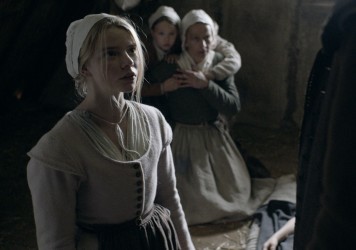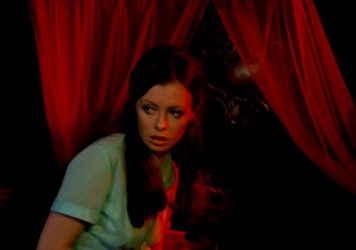Christopher Murray directs and stars in this intriguing and original drama about an 1880s Chilean trial for witchcraft.
I don’t know who you are anymore,” says Agnes (Annick Durán) to Rosa (Valentina Véliz Caileo) a little way into Christopher Murray’s Sorcery (Brujería). Rosa is not so sure herself.
A 13-year-old maid to German settlers on Chile’s Chiloé Island in 1881, Rosa has converted to Christianity, learnt German and become like her employers – the patriarch Stefan (Sebastian Hülk), his wife Agnes and their young boys Thorsten (Matías Bannister) and Franz (Iker Echevers) – whom she regards as her own family Yet when all the sheep on the property are stricken with a mysterious illness, Stefan suspects witchcraft, and sets his dogs on Rosa’s father Juan (Francisco Núñez), killing him.
Unable to give Juan a Christian burial, and failing to get justice from either the Mayor (Daniel Muñoz) or the Church, Rosa is taken in by Mateo (Daniel Antivilo), an indigenous elder with connections to the Huilliche secret society known as Recta Provincia. Sorcery is both rite of passage and revenge myth, as Rosa, on the cusp of adolescence, looks in the watery mirror, or in Mateo’s eyes, and finds herself. “Some people don’t want to remember,” she is told by Aurora Quinchen (Neddiel Muñoz Millalonco), “but memories are plastered over everything.” Aurora initiates Rosa into the island’s traditional magic – and so Rosa strips away all the trappings of her assimilation to colonialism, and embraces her native inheritance and inner witch.
Murray presents all the shapeshifting, body-swapping and baleful cursing in a strict mode of magical realism where naturalism rules and special effects are eschewed (apart from the odd apparently CGI-tweaked murmuration). This realism is important: for not only is the film’s story, co-written by Murray with Pablo Paredes, loosely based on a real 1880s trial of Chiloé indigenes charged with witchcraft, but the film’s supernatural furnishings serve as metaphors for aboriginal identity.
After all, Rosa, on her quest for justice and equal treatment, is not only returning to her cultural roots, but also undergoing a political radicalisation, as she sees the wrongs of her colonial masters and their compromised servants, and decides to fight back from her furtive “state within the state”. Rosa is awakening not only to her environment, but to the injustices built into the prevailing system, as well as to her own status, class, ethnicity and hidden powers. Ultimately Sorcery is a film about land (and water). Mateo implies that Stefan’s flock has been cursed because he built his farm on sacred earth.
Rosa will learn from Mateo that Huilliches like her father “aren’t heaven creatures, Huilliches are sea creatures”, and she will reverse her Christian baptism with a more native water ceremony, while discovering the island’s literal and metaphorical underground in a cave which, as Aurora only half-jokingly suggests, is located within herself. Here the island’s geography and the natives’ mythology merge into an overlapping mystery which will ultimately bring about the young woman’s emergent self-knowledge, as she metamorphoses into a very different kind of adult.
Published 14 Jun 2024
Chilean magical realism?
Riveting revenge and rites of passage.
Come for the witchcraft, stay for the anticolonialism.

Something wicked this way comes... Robert Eggers’ New England folk tale is steeped in magic and menace.

By Adam Scovell
In the 1960s and ’70s, a spate of low-rent exploitation films tapped sorcery and the occult for cheap, sleazy thrills.

Twenty years since Buffy first hit our screens, feminist horror fantasies are firmly back in fashion.